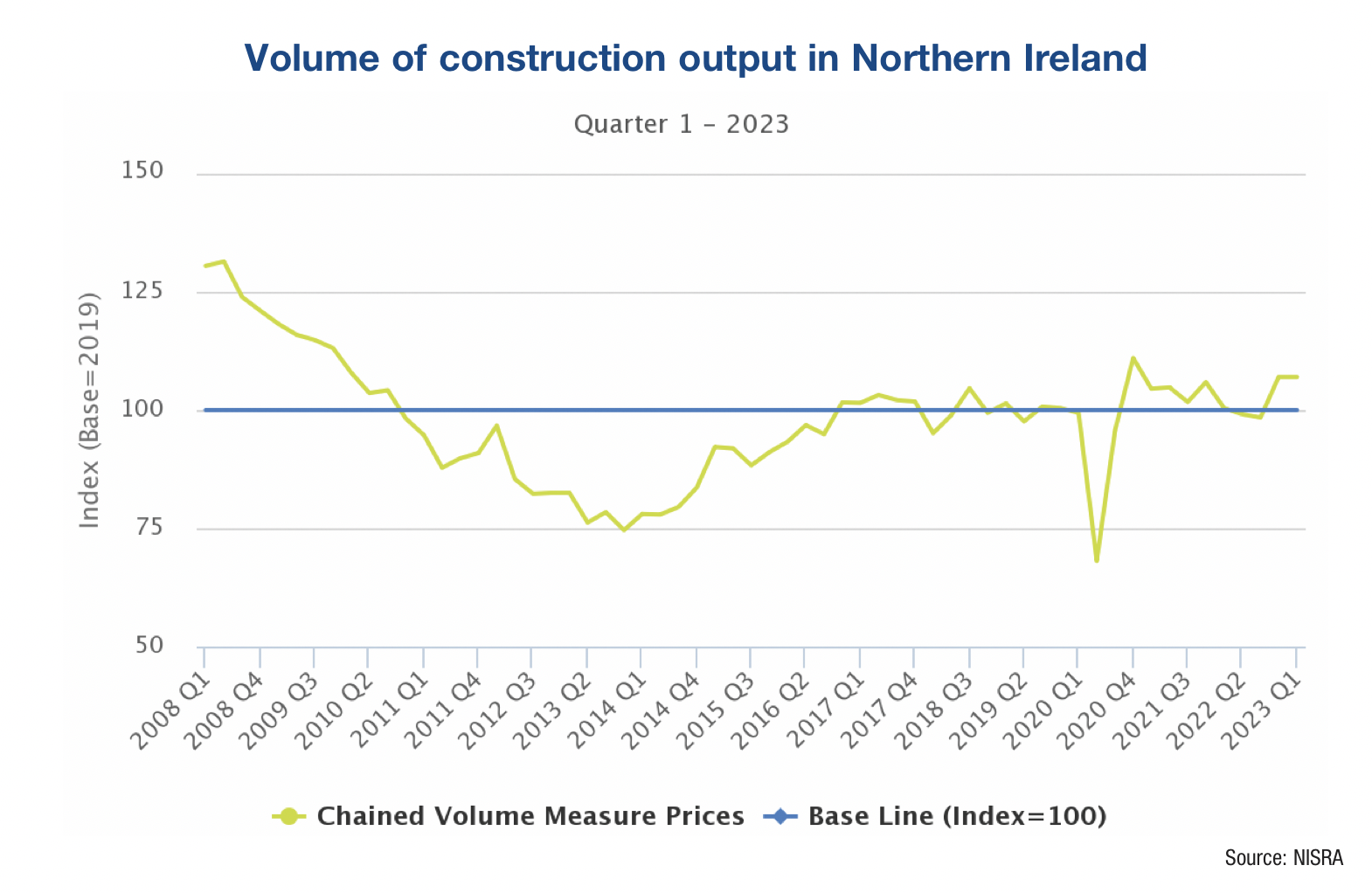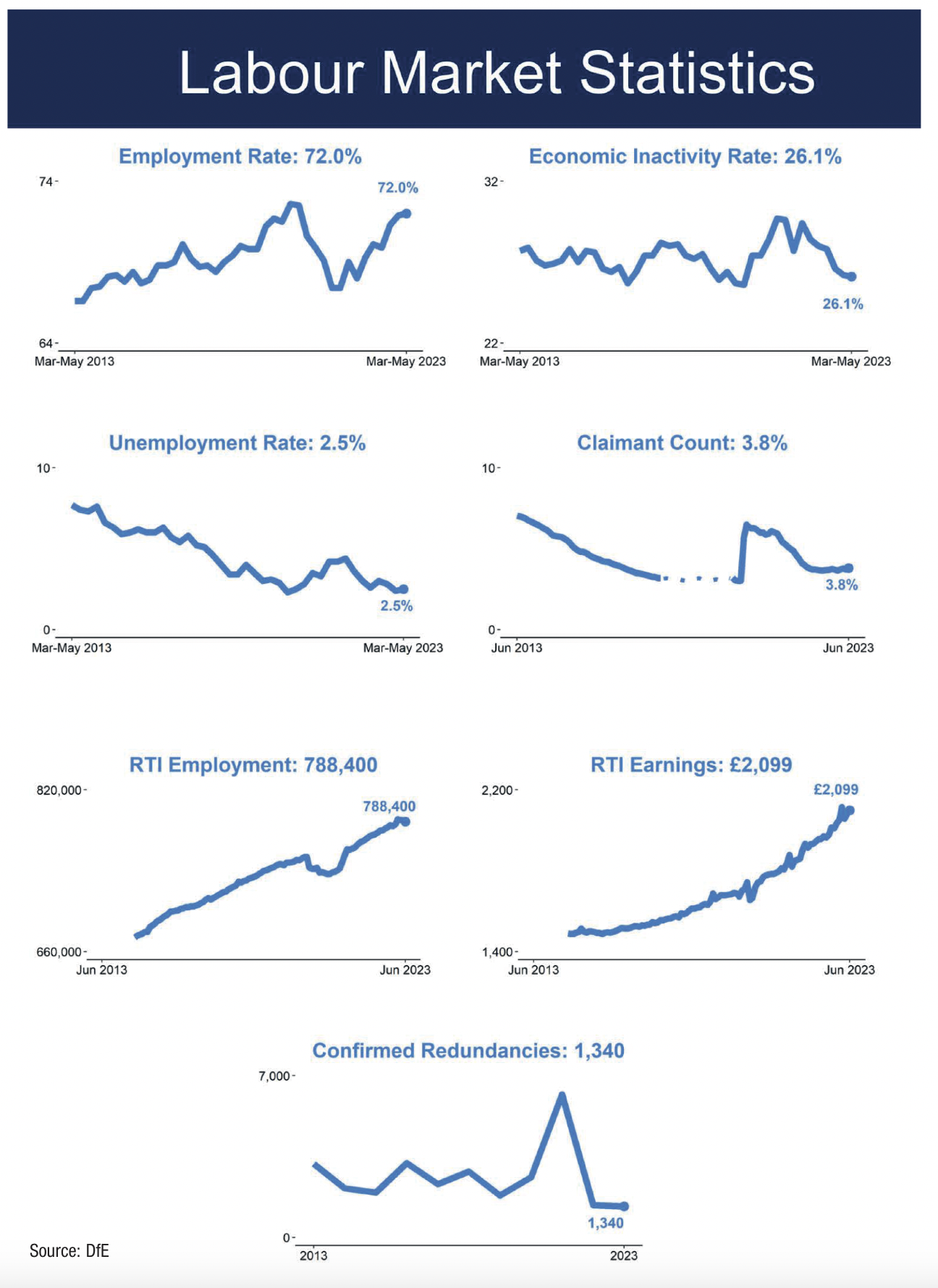Labour market activity

Jobs, earnings, and economic activity have increased in Northern Ireland in the past year but there are signs the labour market could be slowing down.
The latest data shows that the number of payrolled employees in the region’s labour market has increased by 1.6 per cent over the year, with earnings 7.3 per cent higher than June 2022.
The employment rate of 72.4 per cent is the highest recorded since late 2019, and subsequently, the unemployment rate remains near a record low of 2.4 per cent.
The rate of economic inactivity fell to 25.8 per cent, the lowest rate since mid-2019, however, this decrease is in the context of Northern Ireland having the highest economic inactivity rate of all UK regions.
Despite a fall in economic inactivity, in June 2023, 3.8 per cent of the workforce were in the claimant count, meaning the count remains almost 23 per cent higher than the pre-pandemic count in March 2020.
While the total number of hours worked in March-May 2023 had increased by 2.4 per cent on the previous year, the figure has still not returned to pre-pandemic levels and sits 0.3 per cent below the December-February 2020 figure.

However, the predicted slowdown is centred on the level of redundancies notified to the Department for the Economy. The figure is not truly reflective as employers here are only required to notify the Department for the Economy when planning to cut at least 20 jobs, despite more than 90 per cent of private sector companies in the region having less than 10 employees.
The Department was notified of 1,960 proposed redundancies in June 2023, which is the highest number proposed since June 2020. June’s notification brings the annual total to 4,150, the highest rolling 12-month total since September 2021 and almost double the figure for the previous year.
Sectoral performances
Northern Ireland’s services sector was the largest contributor to the 1.7 per cent Northern Ireland Composite Economic Index (NICEI) over the year to Q1 2023. Positive contributions from the services sector (1.2 pps), the construction sector (0.5 pps) and the public sector (0.3 pps), offset a negative contribution from the production sector (0.3 pps).
The services sector has also been the largest driver of pandemic recovery. The Northern Ireland economic output annualised increase of 1.1 per cent from pre-pandemic levels has been attributed to growth in the services sector (0.6 pps) and the public sector (0.5 pps). Contributions from the production and construction sectors are described as “negligible” over the period.

Analysis of the sub-sectors of the Index of Services for Q1 2023 shows that business services and finance had the largest increase over the year (8.7 per cent). Wholesale and retail trade (1.5 per cent) and other services (5.7 per cent) also saw annual increases. Transport, storage, information, and communication was the only sub-sector of the index of services to record an annual decrease (4.4 per cent).
The Index of Production highlights that three out of four sub-sectors have experienced sizeable decreases over the year in the form of electricity, gas, steam, and air conditioning (15.3 per cent), mining and quarrying (11 per cent), and water supply, sewerage, and waste management (8.1 per cent). The manufacturing sector recorded a 0.4 per cent increase over the year.
Construction
At the first quarter of 2023, the volume of construction output increased by 6.5 per cent over the year, however, construction output decreased by 0.4 per cent on a rolling four-quarter basis. The volume increase was driven by an increase in the maintenance sector (15.2 per cent), despite a decrease in the new work sector (8.8 per cent).





